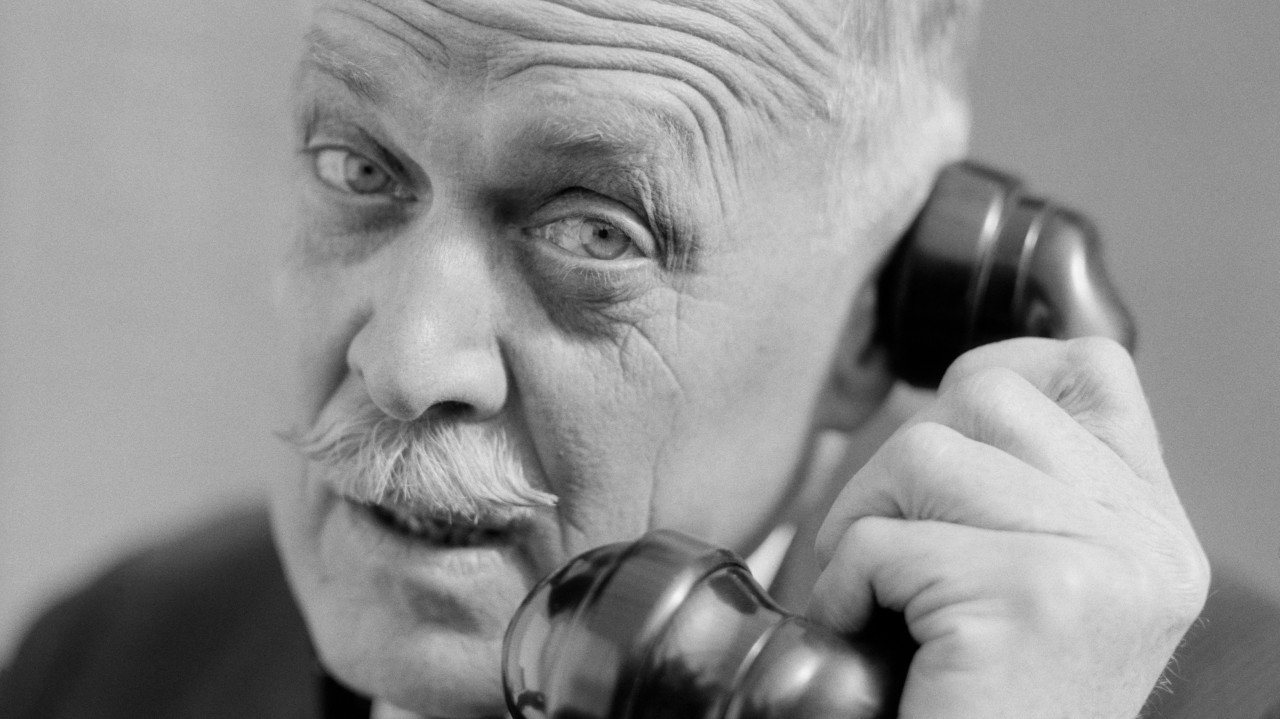When you stop and think about it, there are always phases and cycles; however, in business, we often fail to consider and embrace them. At Getting Results, we define those phases as survival, thrival, mastery, and purpose. Coach Lauren Doyle explains their foundation:
“I had a bit of an epiphany years ago when our daughter was graduating from pre-school or kindergarten. Then she had another graduation at the end of elementary school. Those graduations served a purpose. They signaled a change and were preparing her for the next phase. We have plenty of these sorts of celebrations and different markers in life that indicate there’s a change right around the corner and what to expect with that change. However, in business, we never have those sorts of graduation parties. In business, you reach a certain level, so we start coordinating and planning a big party with food and drinks and invitations.
“In business, you keep going from one day to the next, one year to the next, and before you know it, one decade to the next. Often, people continue to play the game the way they’ve always played it without realizing there are distinct stages where the game changes a little bit, where the rules change, where the strategy needs to shift, and the goals need to shift. I’ve outlined the four distinct phases that every single advisor with whom we work is in or is going through. When you’re in business long enough, you’ll get through at least three of the phases.”
It’s important to note that each event, these proverbial “graduations,” requires a change in behavior. When we consider these phases, it creates a map, and a map’s purpose first and foremost is to enable you to see where you are. Without knowing where you are, you cannot get to where you want to go. In professional worlds, we lack these celebrations and fail to notice the distinct markers that indicate behavior change is needed. We often muddle through somewhat blindly, and that’s time consuming. What got you here never gets you there.
No matter which phase you might be in, there’s the curse of success that sets in. The curse of success sounds like, “Wow. I figured it out and made it to this point. Now I’m afraid to change anything because I got to where am, and if I change anything, I might mess it all up.” There’s fear, but the problem is that things do have to change with each phase if you want to continue to evolve.
Survival
Everyone starts in this phase, whether you’ve started with nothing or if you’ve been given any sort of book of business. No matter when or how you first started, you fight for survival. It’s about making it. There are traps to navigate. This business is notorious for eating people. The kill rate in the industry is 80 percent of financial advisors do not make it to the fifth year. Some firms are really good at training, but their kill rate is still about 50 percent. Most people don’t make it beyond ten years. If you’ve been in the business more than ten years, you’re a unicorn.
The survival phase includes anyone new to the business to about the seven-year mark. We see some clients still in this phase after ten or even 15 years because they haven’t changed their game. When you’re in survival, you’re just gathering. Liken it to being in the wild: you’re gathering food, resources, shelter, and warmth. Just trying to make it. In business, you gather a whole bunch of clients, and not all of them are ideal; some are a pain in the neck, and you have some you would not have designed. You were able to bring them on, sign on the line, and move their assets under your management. You’re gathering without really paying attention—zombie hunting and gathering—because you need to pay the bills.
If you think your business will fall apart tomorrow, you don’t know where your next lead is coming from, you stare at the phone with levels of dread, and deep depression hits on Sunday night because you have to go back into the jungle on Monday, it’s dangerous. It’s not good for you nor your business. In survival mode, you’re knocking on a thousand doors and sending 10,000 emails. You don’t know who your client is or think that everyone is your client. The phone’s to your ear all day and you’re going in circles. If you’ve been in business more than five years, you should no longer be dialed in this way.
All that said, there are goals with every stage, and once you hit the goals, it’s a signal that it’s time to move to the next stage… to graduate. Moving to the next stage means doing things differently. If you don’t know what to do differently, it’s time for a coach. If you have the “Sunday night pit in your stomach,” it’s always a bad sign. Life can be better, and there’s help out there. Get it.
In survival phase, the goal is to gain confidence—confidence in how to talk to clients and confidence in your knowledge of the industry. The second goal is to pay the bills. When you meet these goals, it’s time to move on.
If you’ve been in business eight, nine or more years, and still feel like you are in survival phase and stuck on a plateau, it really is time to reach out for help.
Thrival
Thrival is the phase where we typically connect with clients. It’s the stage at which you begin to thrive. You begin to discern the clients with whom you want to work and shed the idea that you have to serve everyone. You start to determine the type of business you want to create for yourself. It’s also when you determine your level of satisfaction and build the life you want to live. That life never entails working 60 hours a week with your nose constantly to the grindstone. That does not enable you to thrive. Thriving is when you’re excited about going to work, feeling good about the business you designed, and looking forward to serving your clients.
This is where we take our clients through a process of weeding through their relationships and focusing on discernment. Discernment is a key element in the thrival phase. We need to be discerning about our activities, our relationships, and how we’re leveraging our time. So how do you know if you’re thriving in your business? Consider the analogy to having a good dog or a bad dog. The bad dog barks at the neighbor, pees where it shouldn’t, won’t come when called or walk on a leash. It probably keeps you up at night worrying about what it might do next. On the other hand, a good dog listens to you, is trained, and is obedient.
If you believe you’ve moved beyond the survival phase but aren’t thriving, it’s because your business is like the bad dog. It isn’t trained. There’s no structure. It’s not doing what you want it to do. If you’re thriving, the business listens. You have cadence to your week, consistent staff meetings, and consistent appointment flow. You’re in alignment and there’s less friction in your world. Less friction allows you to go faster, farther and with less fuel. Your material needs are met. You’re not worried about paying the mortgage. However, there are still a lot of advisors making 500-, 600-, 700- or more figures and they’re still in survival mode. Their business is a bad dog keeping them up at night.
There can be a challenge to growth because we spend so much time managing this business we created that allowed us to survive, but it’s also the very business that inhibits growth. You might be on a plateau and caught up in all of the things that your business demands. It’s got you trained, not the reverse. And then that curse of success rears up. You’ve worked hard to get here and now you don’t want to mess it up. The curse fails to let you thrive—to enjoy the life you want.
Back to discernment. Many advisors can’t fully thrive because they can’t let go of what’s holding them back. For example, one client had about 1,000 relationships and maybe $400 million under management. Might sound great, but he had no time to enjoy what he’d built. No time to thrive. We helped him pare down his list to under 100 relationships but his business increased four-fold as we helped him design his life and business around his love of boating. Boating became a means of client acquisition—the right clients.
There’s a mindset shift that has to occur. In Lauren’s design of the phases, the goal to attain in thrival is leverage: leverage relationships, staff, and time. It’s creating capacity for yourself and your team. The design has to be created and spelled out for both your business and your life.
Mastery
In reaching mastery, we determine what we’re best at and delegate everything else. This phase involves building a very strong and highly proficient team that includes clearly defined roles. There are distinct processes, systems, and structures that are designed to create capacity for the advisor.
Mastery also goes beyond commitment to the system. It’s when you fully realize that you do good work because you do good work, and that’s reflected in everything—you, your office, your house. Your brand is tight. There a high level of attention to detail. For example, we recently had some finish carpentry done in our house. I thought it looked good and paid him. He came back the next to re-examine it and decided it wasn’t good enough, not to his eye. So he ripped it down and re-did it. Why? Because he’s a master of his craft. Because he does good work to do good work.
In this phase, you begin to bring that approach into your practice, and it begins to change everything. You’re adding a slight edge to all things, and slight edges make big differences.
The goal in the mastery phase is to only do a couple things at which you excel, typically managing the top-tier relationships and delegating. In order to delegate, you have to be a good leader. For our clients at this level, we spend a lot of time focusing on and honing leadership skills.
Purpose
The final level is that of purpose. We get clients who’ve achieved a certain level of income, and they’re at the point of questioning, “How much more do I need? I’ve got the vacation house, the airplane, the mountain house, the farm. I have everything I feasibly could ever want financially.” What continues to drive them? Not every advisor reaches this phase, and that’s neither right nor wrong; however, having a purpose-driven business allows those who’ve reached a high level of financial mastery to keep going.
For example: Why does Oprah Winfrey still work? Why does Tiger Woods still play golf? Why does anyone who has more money than they could potentially spend in a lifetime continue to do what they do? There’s something deeper that drives them, and it may not be immediately apparent. We have a client who reached this phase, and he loves to fly. He decided to become an angel flight pilot. Angel flights involve volunteering to fly patients who need medical services that are not available where they live. Our client flies them in his personal plane to where they need to go to get the treatment they need. Obviously, there’s a lot of cost, including fuel and time. His business became a purpose-based one to fund his efforts and satisfy and fulfill the level he sought.
Purpose is what drives people when all of their financial needs and wants are met.
The other aspect of purpose is building a business that lasts well beyond you. Perhaps it’s creating the infrastructure to bring your children into the business or building a business that supports an altruistic effort, like cancer research or church ministry well into the future, well beyond your life. The more money a business produces, the more impact it (and you) make on the world. That may or may not be your goal. Someone may want to grow the business simply to be the largest producer, and that’s fine.
However, some people are not wired that way and are wired to give back. Giving back can take on many different forms. Coaching youth sports can evolve into creating charities that support youth sports, including reaching underprivileged kids. Through this evolution, you discover like-minded people that, in turn, creates interesting business connections, and an upward spiral develops.
In the purpose phase, you’re operating at a higher level and attracting the right people with whom to collaborate. The result is that people pull together and support one another. Their communities and the world become a better place. Passion calls forth action, and that can be the driver to continue to grow the business and stay in the mix. The power of purpose is to get the passion to drive the action. Being in alignment with purpose enables you to go further faster and with less fuel, and you discover the universe will work with you.
The goal in this phase is to answer the question: What will continue to drive you beyond the dollars?
For most of us, we can’t see our behaviors and actions—the things we’re doing right or wrong. What should we keep doing or stop doing? What do we need to do differently? This is where “wrestling with a stranger” can make a difference. This is where working with a coach enables you to get help seeing and understanding the patterns that unfold. Some advisors, depending on the phase in which the find themselves, may not even be sure what they want their design to be. Coaches can help develop that and provide greater clarity. Coaches can provide the map to help you see where you are in order to determine the right path to where you want to be. Only when you’re clear about the level you’re in now can the next level become available to you.
It’s a misnomer to think that only those who are new to business are in survival mode, experiencing challenges and frustrations. We’ve seen many million-dollar producers who are stuck there. Or stuck in thrival when they could be moving so far beyond that. Boredom and frustration are dangerous to the business and are signals that it’s time to change something… signals that it’s time to reach out.









